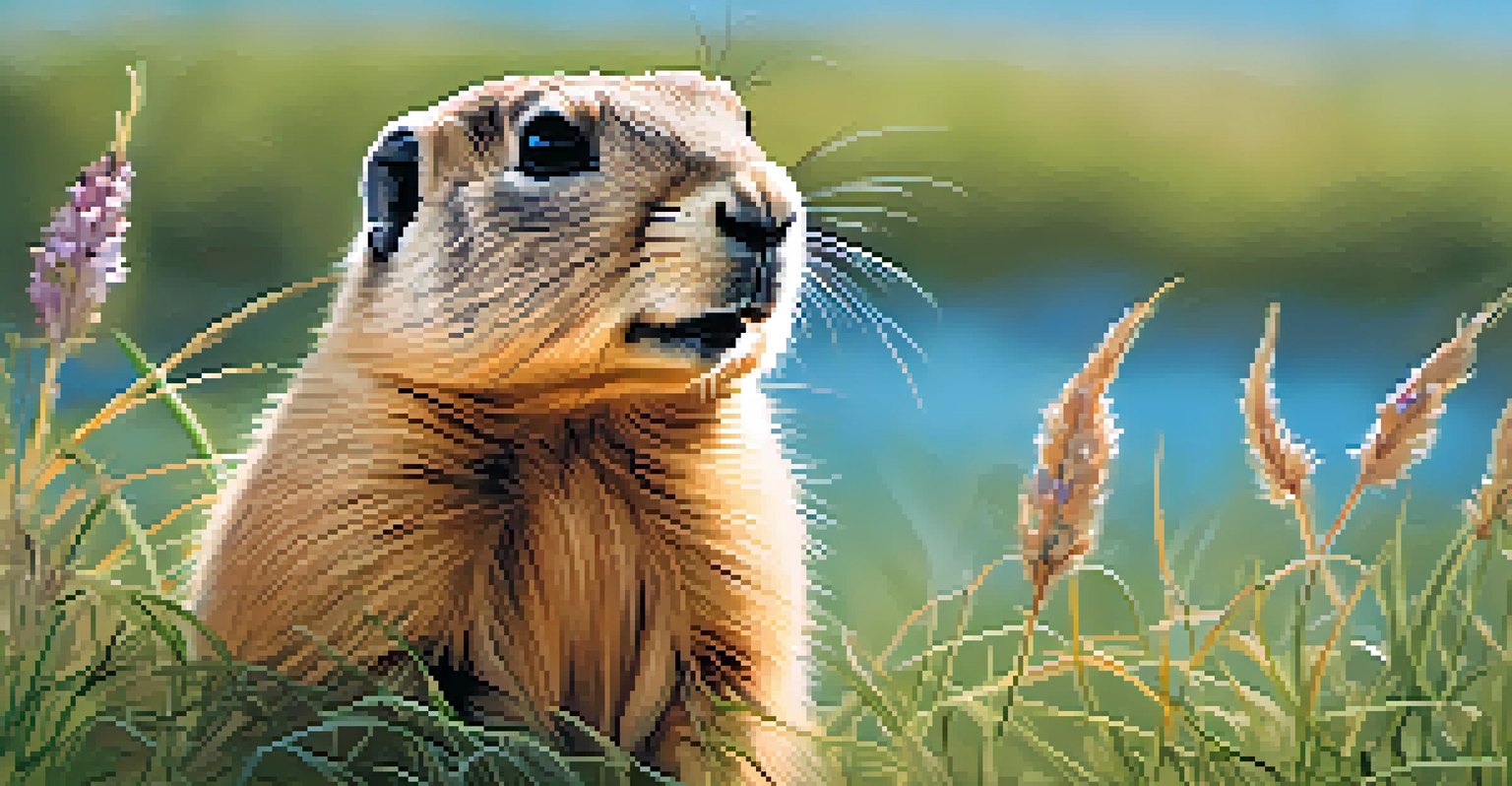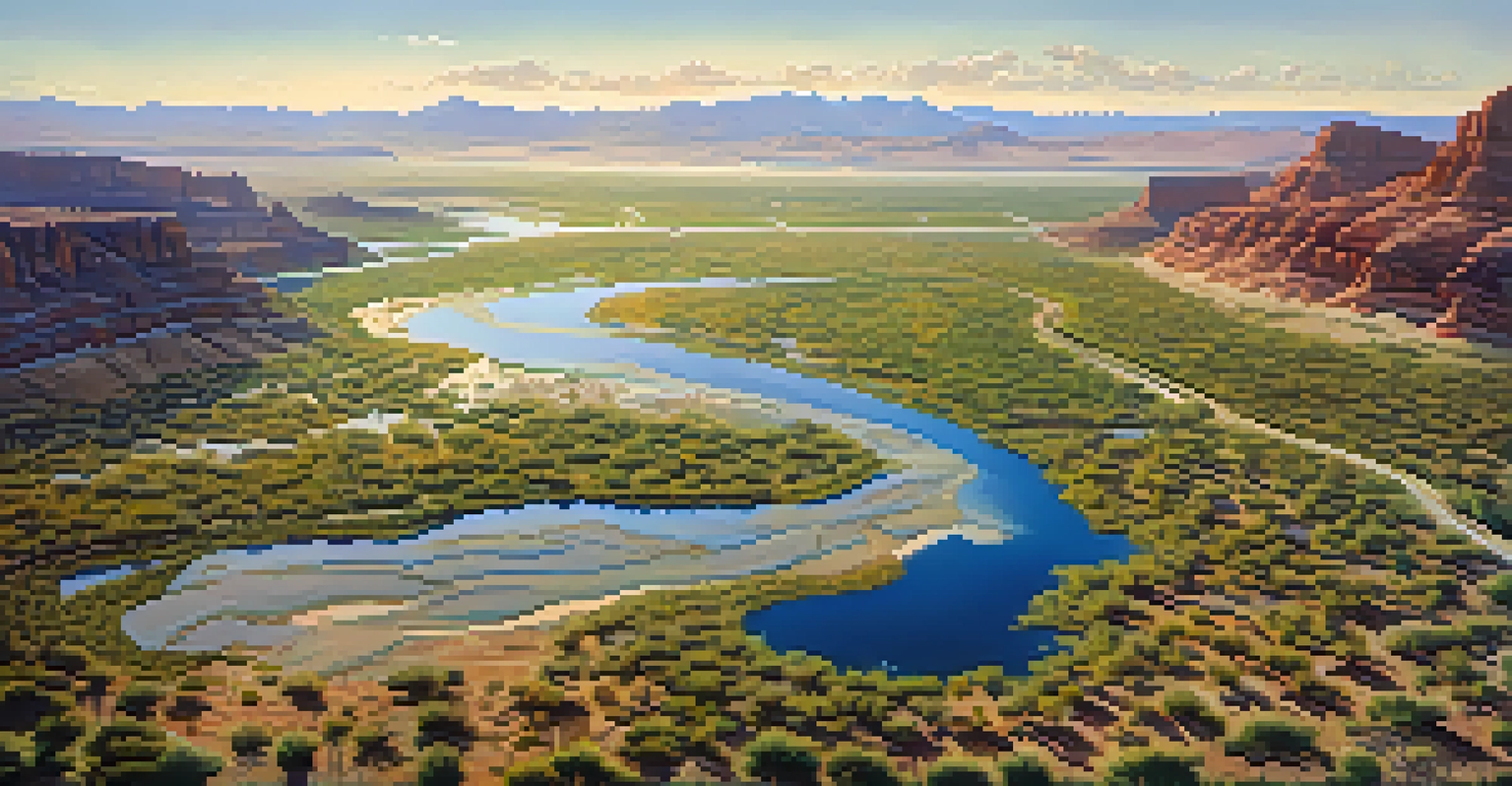The Importance of Biodiversity in Utah's Natural Resources

Understanding Biodiversity and Its Significance
Biodiversity refers to the variety of life on Earth, including different species, ecosystems, and genetic variations. In Utah, this diversity is crucial for maintaining healthy ecosystems, which in turn support human activities like agriculture, tourism, and recreation. The state's unique geography and climate foster a rich tapestry of plant and animal life, making it a biodiversity hotspot.
Biodiversity is not just a measure of species richness, but a reflection of the health of the ecosystems that support life on Earth.
When we talk about biodiversity, we're not just discussing the number of species; we're also considering the relationships between them. Healthy ecosystems rely on these interactions for functions like pollination, nutrient cycling, and pest control. For example, the relationship between bees and flowering plants in Utah exemplifies how interconnected life can be, highlighting the importance of preserving these species.
Biodiversity is a key indicator of ecosystem health. A diverse ecosystem is more resilient and can better withstand environmental changes, such as climate fluctuations or human impact. This resilience is crucial for Utah as it navigates challenges like droughts and habitat loss, making biodiversity conservation a priority.
Utah's Unique Ecosystems and Their Biodiversity
Utah is home to a variety of ecosystems, from deserts and mountains to wetlands and forests. Each of these areas supports distinct plant and animal communities, contributing to the state's overall biodiversity. For instance, the Great Salt Lake provides a vital habitat for migratory birds, while the Wasatch Mountains are home to diverse wildlife, including deer and mountain goats.

In addition to supporting wildlife, these ecosystems also provide essential services that benefit human populations. Healthy forests help regulate water cycles and improve air quality, while wetlands maintain water filtration and flood control. Understanding the biodiversity within these ecosystems helps us appreciate their value and the need for protection.
Biodiversity Supports Ecosystem Health
The variety of life in Utah is essential for maintaining healthy ecosystems that support agriculture, tourism, and recreation.
However, many of these ecosystems are under threat from urban development, invasive species, and climate change. Protecting Utah's unique biodiversity means not only conserving these habitats but also ensuring the survival of the species that depend on them. The more we learn about these ecosystems, the better equipped we are to safeguard them for future generations.
The Economic Value of Biodiversity in Utah
Biodiversity isn't just an environmental issue; it has significant economic implications as well. In Utah, industries such as agriculture, tourism, and outdoor recreation rely heavily on the state’s rich natural resources. For instance, healthy fisheries and wildlife populations attract anglers and hunters, contributing millions to the state's economy each year.
In every walk with nature, one receives far more than he seeks.
Moreover, biodiversity plays a role in agriculture by ensuring crop resilience and productivity. Diverse plant varieties can withstand pests and diseases better than monocultures, leading to more sustainable farming practices. This is particularly important in Utah, where agriculture is a vital part of the economy and community.
Investing in biodiversity conservation can lead to long-term economic benefits. By preserving ecosystems, we secure the services they provide, which ultimately supports various industries. As the saying goes, a healthy environment leads to a healthy economy, making biodiversity an investment worth prioritizing.
Biodiversity and Climate Resilience in Utah
With climate change posing increasing challenges, biodiversity becomes even more critical for resilience. Diverse ecosystems can adapt more readily to changing conditions, providing stability in the face of environmental stressors. In Utah, this means that protecting biodiversity can help mitigate the effects of climate change on communities and ecosystems.
For example, forests and wetlands act as buffers against extreme weather events, such as floods and droughts. They not only absorb excess rainfall but also store water, which is vital during dry periods. By maintaining healthy ecosystems, Utah can better prepare for climate-related challenges and reduce vulnerability.
Economic Value of Biodiversity
Utah's rich natural resources drive industries like agriculture and tourism, making biodiversity conservation economically beneficial.
Furthermore, biodiversity enhances the ability of ecosystems to recover from disturbances. A varied community of species can bounce back more quickly after events like wildfires or insect outbreaks. This resilience is essential for safeguarding the state’s natural resources and ensuring a sustainable future.
The Role of Conservation in Protecting Biodiversity
Conservation efforts are crucial for maintaining and enhancing biodiversity in Utah. Several organizations, both governmental and non-profit, work tirelessly to protect habitats and species at risk. These initiatives often involve habitat restoration, species monitoring, and community engagement to raise awareness about the importance of biodiversity.
One notable example is the conservation of the Utah prairie dog, a species that plays a significant role in its ecosystem. Through targeted efforts, populations have been monitored and habitats restored, showcasing how focused conservation strategies can lead to positive outcomes. Such successes highlight the potential of collective action in preserving biodiversity.
Moreover, engaging local communities in conservation efforts can foster a deeper appreciation for nature. Programs that involve citizen science, education, and volunteer opportunities encourage people to connect with their environment. When communities understand the value of biodiversity, they are more likely to support conservation initiatives and contribute to protecting Utah's natural resources.
The Impact of Invasive Species on Biodiversity
Invasive species pose one of the most significant threats to biodiversity in Utah. These non-native organisms can outcompete local species for resources, leading to declines in native populations. For instance, the introduction of cheatgrass has transformed many native grasslands, altering ecosystems and reducing biodiversity.
The impact of invasive species extends beyond just competition; they can also introduce diseases and disrupt food webs. As invasive species spread, they create imbalances that can have cascading effects on local wildlife and plant communities. This disruption can lead to a loss of species, which further threatens the overall health of ecosystems.
Community Engagement is Key
Involving local communities in conservation efforts fosters a sense of responsibility and enhances the effectiveness of biodiversity protection.
Combating invasive species requires a proactive approach, including monitoring, management, and public education. By raising awareness about the impacts of these invaders, Utah can foster community involvement in prevention and control efforts. Together, we can protect the state’s biodiversity from these harmful threats and preserve its natural heritage.
Engaging Communities in Biodiversity Conservation
Community engagement is essential for effective biodiversity conservation in Utah. When local residents get involved, they can contribute valuable insights and resources to conservation efforts. Engaging communities fosters a sense of ownership and responsibility towards local ecosystems, which is vital for sustainability.
Various programs and initiatives encourage community participation, from clean-up days in local parks to citizen science projects that monitor wildlife. These activities not only help protect biodiversity but also educate participants about their local environment. For example, school programs that incorporate hands-on learning about native species can inspire the next generation of conservationists.

Moreover, collaboration between community members, conservation organizations, and government agencies can lead to more effective strategies. By pooling resources and knowledge, stakeholders can create comprehensive plans that address local biodiversity challenges. Together, we can ensure that Utah’s rich natural resources are preserved for future generations.